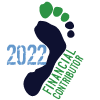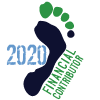Hi everyone. I'm new to the forum and was wondering what people's opinions regarding energy usage while running in the barefoot/minimalist style.
First let me say that changing to this style has worked great for me. I have some cartilage missing behind my kneecap and regular shod running agrivates it to the point where the knee actually will give out, even though there is nothing structurally wrong with the knee. At least that's what my orthopodic surgeon said after looking at the MRI. Anyway, this type of running has worked wonders for me and after 4 months of training I am starting to get back into my old training rythmes from high school and college. I'm in my early 30's now and my legs are strong again, my posture is better. I can feel my whole body falling into much better alignment.
I train for short races due to a high ratio of fast twitch muscles and have set my current sights on the half mile, which I have never raced before. I have have raced the mile, two mile, then switched to the 100m, 200m where I was much more successful. We have some local all comer track meets around here in the winter that I hope to compete in for fun and as a way to gauge my progress each year. I chose the half mile because it's a good blend of fast twitch and endurance which seemed like the way to go.
A lot of my training is at a distance of about 5K, with lots of hill work. I've run 5K-10K races in the past shod style.
I can't help thinking that this BF style must use a lot more calories. The reason I think this is because everytime I land I am essentially using my muscles to negotiate the contact with the ground, as opposed to letting the sole of my shoe slam into the ground and roll/bounce off it. Better for my joints, harder on my muscles. Every landing segement of a stride is to some extent a calf raise, a pretty serious one if you are moving with any kind of speed. This is why it reduces injuries, because the muscles and the whole leg is forced into perfect alignment, that my falling weight is not transfered to my joints, yet I can't help but wonder if this uses way more energy. Energy is key in longer runs.
I have thought a bit about how if the leg was designed to run this way, then maybe it just seems like I am using more energy and at some point my lower leg and foot will make up for a life time of being cushioned unnaturally and become so strong that I don't even notice it. There are times when I am moving at a pretty good pace where it all seems too easy, like I am floating over the ground. I don't see how this can be, but it happens! I also know that barefoot runners have won events such as the marathon, the ultimate test of efficiency, so if this stye used so much more energy, how could that be possible? Those marathoners move at a good clip too, in the 5 minute mile range. I also know that it's probably only beneficial for me to train this way, strengthening my feet and calves because I will be racing up on the front of my feet. It makes me wonder how I used to think my calves were strong enough to do it before!
I have also wondered if I have wrongly interpretted the BF style somehow and what I am doing is more of a sprinting style, but I don't think so, although my strides do seem longer than many of the models I have seen. There is no way I could run a 5K like I do almost every morning sprinting style. Maybe there is no difference or maybe I am doing some combination of the two.
Anyway, any feedback would be great. Thanks.
First let me say that changing to this style has worked great for me. I have some cartilage missing behind my kneecap and regular shod running agrivates it to the point where the knee actually will give out, even though there is nothing structurally wrong with the knee. At least that's what my orthopodic surgeon said after looking at the MRI. Anyway, this type of running has worked wonders for me and after 4 months of training I am starting to get back into my old training rythmes from high school and college. I'm in my early 30's now and my legs are strong again, my posture is better. I can feel my whole body falling into much better alignment.
I train for short races due to a high ratio of fast twitch muscles and have set my current sights on the half mile, which I have never raced before. I have have raced the mile, two mile, then switched to the 100m, 200m where I was much more successful. We have some local all comer track meets around here in the winter that I hope to compete in for fun and as a way to gauge my progress each year. I chose the half mile because it's a good blend of fast twitch and endurance which seemed like the way to go.
A lot of my training is at a distance of about 5K, with lots of hill work. I've run 5K-10K races in the past shod style.
I can't help thinking that this BF style must use a lot more calories. The reason I think this is because everytime I land I am essentially using my muscles to negotiate the contact with the ground, as opposed to letting the sole of my shoe slam into the ground and roll/bounce off it. Better for my joints, harder on my muscles. Every landing segement of a stride is to some extent a calf raise, a pretty serious one if you are moving with any kind of speed. This is why it reduces injuries, because the muscles and the whole leg is forced into perfect alignment, that my falling weight is not transfered to my joints, yet I can't help but wonder if this uses way more energy. Energy is key in longer runs.
I have thought a bit about how if the leg was designed to run this way, then maybe it just seems like I am using more energy and at some point my lower leg and foot will make up for a life time of being cushioned unnaturally and become so strong that I don't even notice it. There are times when I am moving at a pretty good pace where it all seems too easy, like I am floating over the ground. I don't see how this can be, but it happens! I also know that barefoot runners have won events such as the marathon, the ultimate test of efficiency, so if this stye used so much more energy, how could that be possible? Those marathoners move at a good clip too, in the 5 minute mile range. I also know that it's probably only beneficial for me to train this way, strengthening my feet and calves because I will be racing up on the front of my feet. It makes me wonder how I used to think my calves were strong enough to do it before!
I have also wondered if I have wrongly interpretted the BF style somehow and what I am doing is more of a sprinting style, but I don't think so, although my strides do seem longer than many of the models I have seen. There is no way I could run a 5K like I do almost every morning sprinting style. Maybe there is no difference or maybe I am doing some combination of the two.
Anyway, any feedback would be great. Thanks.









